CBT for Negative Thinking – Will it help?
Cognitive Behavioral Therapy (CBT) is generally used to deal with mental health problems, such as anxiety and depression. Not only that, it turns out that cognitive-behavioral therapy can also be used to help people who suffer from physical health disorders, even helping you deal with problems you encounter daily, such as negative thinking.
Cognitive Behavioral Therapy (CBT) for Negative Thinking –
How does it work? Will It Help?
“I am not capable enough to complete this task.”
“They won’t like me. I’m too ugly to be around them.”
“I will never be able to get out of this problem.”
If you have negative thoughts as above, be careful. It can greatly affect the quality of your life.
You will feel that your life will never change for the better. That your life will forever be in the condition you are thinking about.
The problem is, whatever you think about yourself, whether it’s good or bad, both will become the truth.
When you think that you are not smart enough, not beautiful enough or handsome, not fun enough, it will become a reality.
Why?
Because the brain will find 1001 ways to make it really come true.
These thoughts will control how you live your life in the real world.
But, don’t worry too much. Because just as negative thoughts affect your life, you can change your life, change your mind.
By changing the way you think, you are also changing the reality in your life.
Simply put, if you believe you can, you are capable, you are smart, and you can achieve great things in your life, then you will see yourself as you really think it is.
You will really be able to achieve something as big as you think in the end.
The problem is, how to stop negative thoughts?
Surely you don’t want to be constantly in a negative feeling due to your own thoughts?
I want you to be free from that bad feeling. Feeling helpless and useless.
Also read: The Negative Effects of OVERTHINKING – What Does It Do To Our Health?
What is CBT?
Cognitive behavioral therapy (CBT) is a more general term for cognitive therapy and is a form of psychotherapy. Cognitive therapy aims to help train your way of thinking or cognitive function and how to act (behavior). This is why cognitive therapy is better known as behavioral cognitive therapy.
Cognitive Behavioral Therapy (CBT) and negative thinking
Cognitive Behavioral Therapy is a therapy used for broad mental disorders, such as depression, phobias, to Obsessive Compulsive Disorder (OCD). This therapy encourages a person to look at himself/herself in a different way, which will be useful for his/her daily life.
So what happens to the brain when undergoing CBT? CBT starts from the principle that a problem is not caused by a situation, but from how a person interprets the problem in his mind. This then affects the feelings and actions.
For example, if you meet a friend but he doesn’t greet you, you might think he doesn’t like you. When you meet at another time, you tend to avoid it.
Various thoughts and negative feelings also arise between your friends and yourself. If you experience these thoughts and feelings with many of your friends, you can also feel isolated in your circle of friends.
Benefits of CBT for our health
Cognitive Behavioral Therapy is used to help sufferers of mental health disorders recognize problems or challenging situations in their lives, which risk disrupting the quality of life as well as mental and physical health. In addition, cognitive behavioral therapy is done to help you find approaches and solutions to problems that are appropriate to the conditions that you are experiencing.
In addition to anxiety and depression disorders, cognitive behavioral therapy is also proven to be an effective way of dealing with mental health disorders, such as:
- Eating disorders
- Phobias
- Sleep disturbance
- Alcohol abuse
- Panic Disorder
- Sexual disorders
- Bipolar disorder
- Schizophrenia
- Obsessive-Compulsive Disorder (OCD)
- Post-traumatic Stress Disorder (PTSD)
Physical illnesses such as irritable bowel syndrome (IBS) are one example of physical health disorders that also apply cognitive behavioral therapy as a method of treatment.
How Cognitive Behavior Therapy works in general
The concept of cognitive behavioral therapy is that your thoughts, feelings, physical sensations, and actions are interrelated and influence one another. Negative thoughts and feelings can get you caught in a “vicious circle” of problems that feel increasingly heavy or unusually large.
Behavioral cognitive therapy can help change emotional, behavioral, and thought disorders by:
Identify the problem
Identify problems or situations and conditions that interfere in your life. For example, death, divorce, anger, or the presence of mental disorders. After that, the therapist will help find the source of negative feelings or destructive patterns that play a role in the problem being faced.
Focus on finding solutions
This cognitive-behavioral therapy helps you solve large problems into small problems that can be dealt with more positively, thereby helping to ease your feelings. For example, the therapist will separate the problems associated with thoughts with feelings and physical, as well as actions.
Look for practical ways that can improve your way of thinking every day
This is done by analyzing the effect of the problem on other problems, as well as their effect on you. The therapist will look for approaches and types of therapy that are appropriate, as well as set the ultimate goal to be achieved. You will also be helped to focus on the problems that are now not the problems of the past, then change the existing negative or destructive patterns to be more positive.
Encourages you to practice and practice positive habits
For example, improving the way you deal with, detect and recognize problems, and change destructive thought patterns or behavior in response to these problems.
After a few sessions, the therapist will review the steps or changes that have been made in cognitive behavioral therapy, the goal of which is to see if the method that has been used is right for you. This is done to find the best way that can be applied in your life.
How does CBT work to prevent negative thinking?
CBT aims to stop this negative cycle by identifying negative reactions that are processed by the brain.
CBT tries to replace this negative ‘style’ of thinking with something more useful and realistic. This effort can be a challenge for people who have mental health problems.
How to stop this negative thinking style? Some psychological theories mention the existence of negative thinking patterns through a process called ‘negative reinforcement’. For example, if you are afraid or have a phobia of spiders, you learn that you can reduce your fear level by avoiding spiders.
This action does give you peace of mind for a short time, but it only reinforces your fear of spiders. This is called negative reinforcement.
That is where CBT comes into play. Gradually, CBT actually advises people with certain phobias to deal with the things they fear and believes that nothing bad will happen. This belief will slowly stop the fearful thoughts that the brain processes.
Human instincts are naturally processed by a part of the brain called the limbic system. This part includes the amygdala, the part that processes emotions, and the hippocampus, which is the part that enlivens a person’s traumatic memories.
A study of the brain shows that excessive activity in these two parts occurs in people with certain phobias. Excessive activity can become normal after undergoing CBT therapy.
In this way, CBT is able to make tangible changes to the emotional (instinct) and logic (thoughts) of our brain. Interestingly, the same pattern of brain changes occurs in the treatment or treatment with illegal drugs, namely psychotherapy.
Of the many diverse therapies in the world of psychology, CBT is clinically proven to be the most successful. But unlike therapy using drugs, CBT can provide a longer-lasting effect. Even though he had only been on therapy for a short time, many people claimed that his influence could last a long time.
How effective this method is?
Maybe not everyone can take CBT. For example people with complicated mental problems, such as trauma that have occurred since childhood. In that case, of course, longer therapy is needed and deeper identification.
The success of CBT therapy also depends on the commitment of people who undergo it, including the willingness to treat themselves outside the therapy session with a therapist. Of the many therapies in the world of psychology, more people feel satisfied undergoing CBT therapy. Psychologists and science experts began to unravel the reasons behind this phenomenon.
Important note
Cognitive Behavioral Therapy can indeed be used to manage problems related to your thoughts, feelings, and actions. But this therapy is not necessarily suitable for everyone. It is recommended that you be open and honest when you do the first consultation so that the therapist can find an approach and therapy that suits your condition.
CBT has advantages, among others in terms of shorter treatment periods compared to other forms of consultation therapy. However, cognitive-behavioral therapy also has disadvantages, such as the need for full commitment from patients so that this therapy can be successful.
Be sure to discuss with your therapist, about these considerations and other factors, before deciding to choose CBT as a form of therapy that you want to run.
Where do we start? – ABC thought record
Therapists will start by teaching the basic formulas of A B C thought records to their clients. Here is how:
Therapist draw the formula to the client: A ==> B ==> C
A
A situation where what causes an unpleasant event, the trigger can be from the environment or any stimulus that starts the whole reaction process (For example Anna sees herself in the mirror)
B
Cognition, beliefs, and attitudes (For example Anna thinks that she is fat)
C
Either a person’s emotions or behavior. C is a consequence of A. Where do they reflect in their feelings and thoughts (For example Anna becomes depressed)
The realistic goals of therapy are discussed at the beginning of therapy with the patient and use the emphasis on consequences to motivate the patient to change. The therapist must ensure that the steps made must be measurable, realistic, and achievable.
How to break the cycle of negative thoughts
Two things you need to break the cycle of negative thoughts, self-awareness, and the will to love yourself.
These two things will be the capital to break the cycle of your negative thoughts.
After the two capital that you have, see further discussion below to be able to break the circle of negative thoughts.
1. Be aware of the thoughts that affect you
This negative thought is hard to realize because you think it has become a part of you. As if it is something normal. As if that wasn’t a problem. And all change always starts from self-awareness.
- Try to be quiet for a moment.
- Watch what you say to yourself continuously.
- How do you feel when you say that to yourself?
- Is that true?
As you pay attention to what you think about yourself, you will begin to realize how often you think negatively about yourself.
But it is good. Because you won’t be able to start a change as long as you don’t realize it.
So, that awareness is a good start for a change.
2. Learn to accept negative thoughts as they arise (and keep going)
Many people believe that you have to really get rid of negative thoughts 100% to be happy. But, the assumption was wrong.
You won’t be able to get rid of all those negative thoughts from your head. It will definitely still be there. It will definitely keep popping up.
What you can do is decide whether you will continue to have negative thoughts. That is the most important.
The next time a negative thought arises, just think of it as a car lined up in front of your house or office.
You know that a car is passing but let it go. Just let them pass.
Don’t try to wave at the passing car.
Don’t keep thinking about what cars have passed just now.
Anyway, just let them pass. Ignore everything.
Paying attention to negative thoughts is tantamount to giving him the power to control yourself.
You can’t stop the negative thoughts that come from your head, but you can always ignore them. Let it pass you by.
3. Challenge the negative thoughts
Whose name is that belief always repeats? Faith always tells you what you believe in, over and over again. Continue like that.
So, besides being very important to let negative thoughts pass like point number two above, what’s not less important is that you have to know what the root cause of negative thoughts is.
Where do all those negative thoughts come from?
For example this. You keep telling yourself you’re stupid. And that you do all day.
If you are aware of the thought, ask yourself, what is the basis for you to say that? Are you really stupid or is that just a useless thought? What proof are you stupid?
Challenge your negative thoughts by questioning the truth.
By doing that, you will realize that those thoughts aren’t right at all.
You must have done or achieved things that are contrary to those thoughts.
That you have successfully completed a task.
That you have successfully solved a problem.
And many more positive things happen in your life.
By challenging those negative thoughts, by knowing the truth, you have the opportunity to change those negative thoughts into positive ones.
4. Replace negative thoughts with positive and more realistic ones
Everything that is damaged must be replaced.
A broken positive-negative thought cycle can easily be modified by something better for you.
Whenever negative thoughts arise, stop for a moment, and think something positive to replace them.
If you think “I can’t do this.”
Try to tell yourself that you are far more capable than what you think.
Note, however, you must tell yourself what you truly believe.
If you start telling yourself things that don’t suit you and meet a situation that proves that your beliefs are wrong, the consequences can even get worse.
***
Conclusion
So, based on the review on CBT for negative thinking and the explanations of how it actually works above, do you think you would try it?
Changing the way of thinking is not as easy as turning the palm of the hand, but the results can change the way you look at life. Can change life itself.
If you are struggling to deal with negative thoughts that continue to emerge, find out where they come from and how you can react to them as written above. For your own good.
Also, if the negative thoughts make you depressed so that you cannot fully function in your daily life, please call your doctor or see a professional therapist.
I’ll leave you with this video. Check it out:
Stay safe, happy, and healthy, Friends.

—————————————————————————————————————————————–
This post may contain affiliate links, which means I make a small commission off purchases, at no extra cost to you. Read my full disclosure here. Thank you for supporting the work I put on this site!
—————————————————————————————————————————————–
We Stress Free does not provide medical advice, diagnosis, or treatment. However, if you need someone to talk to and want to make friends, please feel free to reach me at ferra@westressfree.com. If you would like to REDUCE your STRESS and are interested to do an ONLINE THERAPY, you can do so here.
———————————————————————————————————————————
Disclaimer: The information contained in this website is for educational and informational purposes only and is not intended as health or medical advice. Always consult a physician or other qualified health provider regarding any questions you may have about a medical condition or health objectives.
Thank you for reading today’s topic: CBT for Negative Thinking – Will it help?


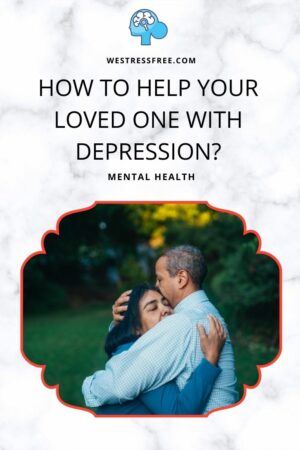

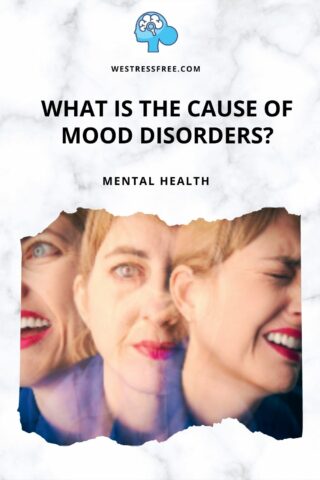
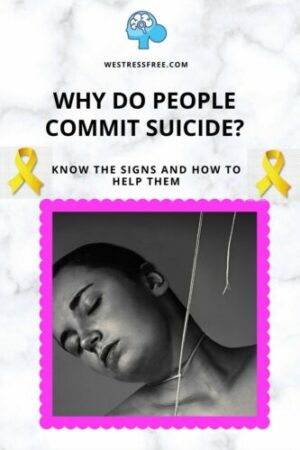


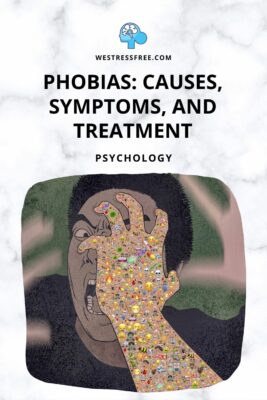

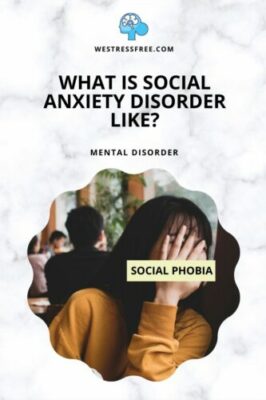








I have experienced reprogramming your brain from negative thinking to positive thinking can help you overcome almost any problem you are facing, and I found the most difficult part for me was to catch myself thinking negatively and replacing my negative thoughts with positive thoughts instead.
Jeff
Hello Jeff,
Yes, I understand what you’re saying. To switch from having negative thoughts into positive thinking is not easy. I think one way to do it is by visualization. Try to visualize your success goals, or think about how fun it is if you can do your hobbies with your close friends, etc. It does takes practice but I am sure you can do it! 🙂
Thank you for your comment. I really appreciate it!
Stay safe, happy and healthy!
Ferra
Thank you for a thorough discussion about how CBT actually works. I have heard this before, but I haven’t experienced one. I have OCD but I get by through meditation. And that’s what I do also (as it is taught in meditation)–observe thoughts like trains, and allow them to pass by. I never thought it is a CBT technique. I manage my emotions pretty well and I call it self-talk, and I agree, it does wonders. Thank you for sharing your thoughts, it was discussed in a simple and very understandable manner. Cheers, A
Hello A,
Thank you for stopping by my website, reading the post, and leaving a kind comment.
I appreciate you for sharing your thoughts and support.
Glad to hear that you found this post useful.
Stay safe, happy, and healthy!
Ferra